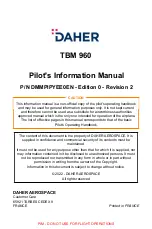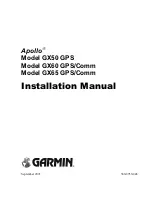
O V E R V I E W
Data Device Corporation
BU-67121W Manual
Rev B – 6/16
5
•
Various PMC and Mini-PCIe Modules Support a Range of Avionics Interfaces
o
MIL-STD-1553
o
ARINC 429
o
ARINC 717
o
Avionics Discrete I/O
o
Custom I/O
•
Three Modes of Operation, Using DDC’s Hardware and Software
1.
Remote Access Mode
Uses Ethernet as a Virtual Backplane Between
Applications Running on a Host Computer and 1553/429 Interfaces
Located Within the AIC, Eliminating the Need and Cost of Long Cabling
to Onboard 1553/429 Connections from the Test Lab
2.
Protocol Conversion Mode
Uses Bridging SDK, Which Allows Userts
to Easily Create Embedded Software on the AIC that will Autonomously
Forward Data Between MIL-STD-1553, ARINC 429, and Ethernet
Interfaces
3.
Standalone Mode
Allows the AIC to Operate as a User Programmable
Computer System
Software
•
Linux Operating System and BSP
o
Ethernet Stacks, with UDP/IP and TCP/IP Sockets, Telnet, FTP, TFTP,
SSH, and HCTP.
•
DDC Protocol Conversion API, Providing Turnkey Conversion From Any
Ethernet, 1553, or ARINC 429 Port to Any Other Port(s)
•
DDC AceXtreme MIL-STD-1553 API, Including Sample Programs
•
DDC ARINC 429 API, Including Sample Programs
•
Built-in Editor, Allowing Editing and Saving Files Over Telnet
•
Built-in ‘C’ Compiler
•
Can transfer internal files to a host computer, edit remotely, and transfer files
back to the AIC before compiling.
2.2 Top-Level Block Diagram
Figure 1 is the top-level functional block diagram of the Avionics Interface Computer
(AIC). The AIC’s CPU, an Intel E3845 Atom processor, mounted on a Qseven
Module, interfaces through three 1x PCI Express interfaces to the AIC’s other major
functional blocks for Mini PCI-e and PMC site connections.










































